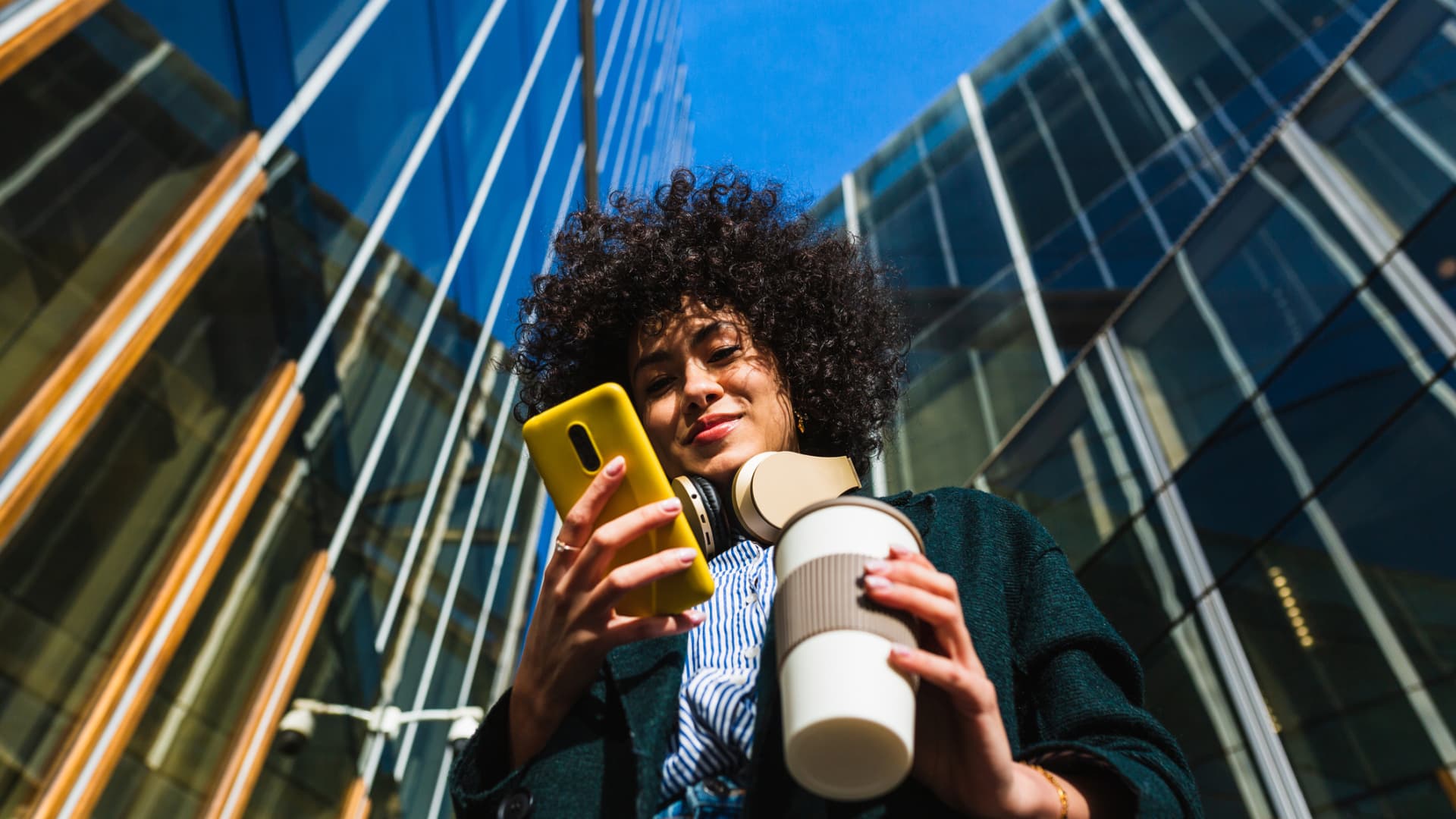
Our dependence on smartphones happened swiftly.
Smartphone technology was invented in the early 90s, and the first iPhone launched in 2007, the first Android in 2008. By 2010, 35% of Americans owned a smartphone, according to Pew Research. During the next 11 years that percentage would climb to 85%.
Saying your smartphone usage is an “addiction” can still seem a little dramatic, though. Especially because you probably use your iPhone or Android as much as your friends and family.
Catherine Price, author of “How to Break Up With Your Phone,” writes in her book that the pervasiveness of these behaviors is exactly why they need to be examined.
“The fact that these behaviors and feelings are so universal does not mean that they are harmless,” Price writes. “Instead, it’s an indication that the problem may be bigger than we think.”
If you want to find out if your phone usage could be classified as an addiction, there is a quick survey you can take, which Price includes in her book, that will tell you: the Smartphone Compulsion Test.
What is the Smartphone Compulsion Test?
The Smartphone Compulsion Test was developed by David Greenfield, who is the founder of The Center for Internet and Technology Addiction and assistant clinical professor of psychiatry at the University of Connecticut School of Medicine.
It consists of 15 yes-or-no questions such as “Do you feel reluctant to be without your cell or smartphone, even for a short time?” and “When you eat meals, is your cell or smartphone always part of the table place setting?”
The more affirmative answers you give, the more likely your behavior is compulsive. If you answer “yes” to more than five questions, Greenfield classifies your smartphone usage as “problematic.”
Price notes that you might be alarmed by your own results: “The only way to score below a 5 on this test is to not have a smartphone,” she writes.
Why iPhone usage is a problem
Let’s say you score more than a five — is it all that bad? According to science, yes.
The average American now spends nearly four-and-a-half hours per day on their smartphone, according to recent data from Reviews.org.
This has drastically changed how we relate to one another and to ourselves. The presence of a smartphone can actually reduce the quality of our in-person conversations with others. And extensive social media use can lead to increased feelings of isolation.
If you want to “break up with you phone,” Price outlines a four-week plan that can help you cut back:
- Week 1, technology triage: During this week you’ll download and start using tracking apps that will tell you exactly how much time you’re spending on your phone. You’ll also delete some of the more addictive functions, like social media, and create a physical barrier to keep you from reaching for your phone as often.
- Week 2, changing your habits: After assessing the problem, you can start shifting your behavior. Change where you charge your phone, set up an app-blocker. These can help you cut down on screen time when being on your iPhone frequently still feels so natural.
- Week 3, reclaiming your brain: Price suggests a series of exercises that can help you feel less anxious without your phone. Start meditating. Swap out time you might have been on your phone with other activities, such as listening to music (even if it’s playing on your phone, you don’t have to be actively looking at the screen).
- Week 4, your new relationship and beyond: Finally, decide how you want to use your phone. Maybe you want to listen to podcasts but don’t want to be scrolling on Tik Tok. Delete apps and check in with how you’re checking your phone, accordingly.
This cleanse will hopefully help you set healthy boundaries with your smartphone and improve the quality of your in-person relationships.
DON’T MISS: Want to be smarter and more successful with your money, work & life? Sign up for our new newsletter!
Get CNBC’s free Warren Buffett Guide to Investing, which distills the billionaire’s No. 1 best piece of advice for regular investors, do’s and don’ts, and three key investing principles into a clear and simple guidebook.
